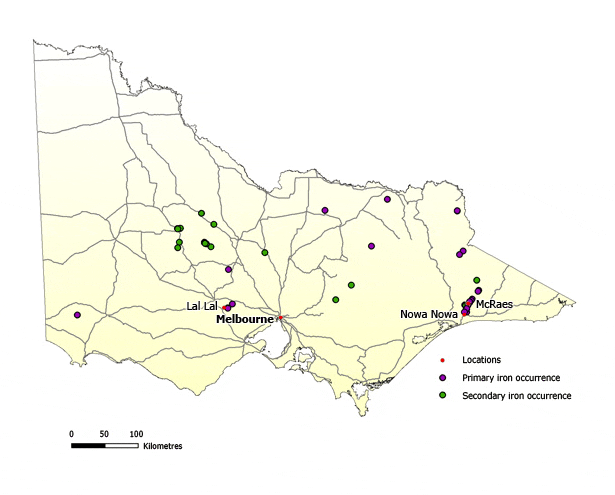Iron

Iron accounts for the majority of worldwide metal production. Its strength and low cost make it an indispensable construction material.
Iron is commonly alloyed to produce steel. In Victoria iron is found as:
- secondary, near-surface ironstones
- iron–manganese (limonite–psilomelane) deposits of exhalative origin in the Snowy River Volcanics
- hematite (Fe2O3) and magnetite (Fe3O4) replacement deposits in Silurian limestones.
The surface ironstones are the most economically significant iron deposits in Victoria. They are concentrated in the Buchan area. The largest resources of iron ore in the State are at Nowa Nowa; mineralisation consists of hematite and magnetite, with minor pyrite and chalcopyrite, and was formed by the replacement of limestone. Other deposits in this area contain lower grade limonite or psilomelane.
Most other Victorian iron deposits are limonite rich, developed during lateritic weathering in the Tertiary. The largest deposit of this type is at Lal Lal, a 2–4 m thick layer containing up to 49% iron, which was worked to produce pig iron for use in foundries on the goldfields in the 1870s.
Further information
Minerals of Victoria – Geological Survey of Victoria Report 92
Maps
To create your own maps online and in real time, plan exploration activities by viewing land status, or download GIS data to add to your own maps, visit GeoVic.

Page last updated: 12 Jan 2023